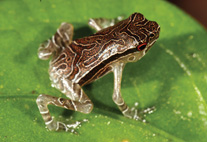Abstract
The Alligator Snapping Turtle (Macrochelys temminckii Troost in Harlan 1835, sensu lato) has been historically treated as a single, wide-ranging species, until a recently published paper by Thomas et al. (2014; hereafter Thomas et al.) analyzed variation in morphology and mitochondrial DNA sequence data to describe two new species of Macrochelys: the Apalachicola Alligator Snapping Turtle (Macrochelys apalachicolae Thomas, Granatosky, Bourque, Krysko, Moler, Gamble, Suarez, Leone & Roman 2014) and the Suwannee Alligator Snapping Turtle (Macrochelys suwanniensis Thomas, Granatosky, Bourque, Krysko, Moler, Gamble, Suarez, Leone & Roman 2014). The specific epithet temminckii was retained for populations in drainages from the Yellow River in Alabama and Florida west to the San Antonio River, Texas. Because populations of Macrochelys have been historically exploited by humans (Pritchard 1989) and the life-history strategies of large, long-lived turtles make them susceptible to declines from harvest (Congdon et al. 1994), a sound understanding of species delimitation and richness is critical for the conservation of alligator snapping turtles, especially if the acceptance of a widely distributed species disguises the presence of multiple, smaller-ranged species.

